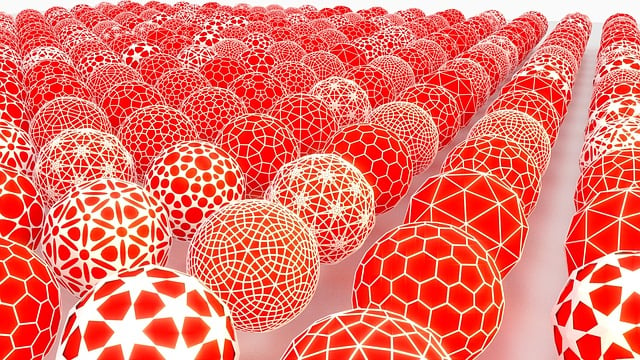Kratom, a tropical plant with traditional medicinal uses, shows promise in addiction treatment as an alternative or adjunctive therapy, targeting opioid and stimulant use disorders. Its unique alkaloids interact with opioid receptors to reduce withdrawal symptoms and cravings. Recent research also explores kratom's effects on dopamine and serotonin levels, suggesting benefits for stabilizing emotions and co-occurring disorders. While considered safe for many, hyperpigmentation is a potential side effect due to its impact on skin melanin production; proper skincare and moderation can mitigate these issues, with consulting healthcare professionals offering personalized guidance.
Kratom, derived from the tropical plant Mitragyna speciosa, has emerged as a potential ally in addiction treatment and recovery. This natural herb has gained attention for its analgesic and stimulant properties, offering an alternative approach to traditional medications. While studies show promising results, understanding its mechanism of action is key. Beyond its therapeutic benefits, this article explores a less-discussed side effect: hyperpigmentation associated with kratom use, providing insights for informed decision-making in the pursuit of addiction recovery.
- Understanding Kratom and Its Potential Benefits for Addiction
- The Science Behind Kratom's Effectiveness in Treating Addiction
- Navigating Hyperpigmentation Concerns with Kratom Use
Understanding Kratom and Its Potential Benefits for Addiction
Kratom, scientifically known as Mitragyna speciosa, is a tropical plant native to Southeast Asia with a rich history in traditional medicine practices. The leaves of this plant contain unique alkaloids, including mitragynine and 7-hydroxymitragynine, which have gained significant attention for their potential therapeutic effects. When it comes to addiction treatment, kratom has emerged as a promising alternative or adjunctive therapy due to its ability to interact with the body’s opioid receptors, offering relief from withdrawal symptoms and cravings.
Research suggests that kratom may help individuals struggling with various types of addiction, including opiate and stimulant use disorders. Its effects include reducing anxiety and depression often associated with withdrawal, enhancing mood, and promoting relaxation without inducing drowsiness or sedative effects like traditional prescription medications. Interestingly, some studies even propose that kratom’s interaction with opioid receptors might contribute to its potential in treating hyperpigmentation, a side effect sometimes observed in individuals with addiction due to prolonged exposure to stress hormones.
The Science Behind Kratom's Effectiveness in Treating Addiction
Kratom, derived from the tropical plant Mitragyna speciosa, has been a subject of interest in the addiction treatment community due to its potential to alleviate withdrawal symptoms and cravings. Scientific research suggests that kratom’s effectiveness stems from its unique chemical composition. The plant contains various alkaloids, including mitragynine, which interacts with opioid receptors in the brain, offering a natural alternative for managing opioid addiction. This interaction explains why kratom has shown promise in reducing the intense cravings associated with withdrawal, providing much-needed relief to those in recovery.
Furthermore, studies explore the impact of kratom on dopamine and serotonin levels, neurotransmitters crucial in regulating mood, pleasure, and reward. By modulating these systems, kratom may help stabilize emotional states, making it a potential tool in treating co-occurring disorders like depression or anxiety, which often accompany addiction. Some research even hints at its ability to reduce hyperpigmentation, a common skin issue associated with long-term substance abuse, adding another layer to its potential therapeutic benefits.
Navigating Hyperpigmentation Concerns with Kratom Use
Kratom, a natural herb used for its opioid-like effects and pain relief properties, has gained attention as an alternative treatment for addiction. However, like any substance, it can cause side effects, including hyperpigmentation. Hyperpigmentation kratom refers to the darkening of skin patches, which can be unsightly and distressing for users. This issue arises due to increased melanin production in response to inflammation or skin damage caused by the herb. While some users report temporary hyperpigmentation after starting kratom, others may experience longer-lasting changes in skin tone.
To navigate these concerns, it’s essential to understand that moderate use and proper skin care can help minimize hyperpigmentation. Additionally, consulting with healthcare professionals who specialize in addiction treatment and dermatology can provide personalized guidance on managing both the addiction and potential skin side effects. Some strategies may include using sunscreen, wearing protective clothing, and exploring topicals or procedures to even out skin tone over time.
Kratom shows promise as a natural tool for addiction recovery, offering potential benefits backed by science. However, it’s crucial to approach its use thoughtfully, especially regarding side effects like hyperpigmentation. Further research is needed to fully understand its efficacy and safety, but with proper guidance, kratom could be a game-changer for those seeking to overcome addiction. Always consult healthcare professionals before starting any new supplement regimen.














